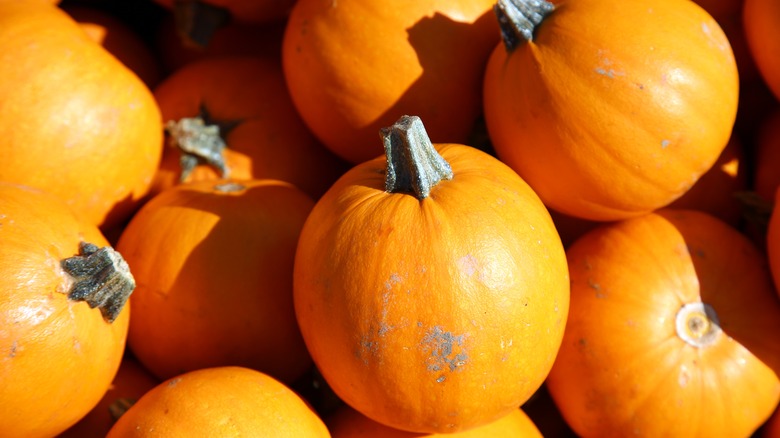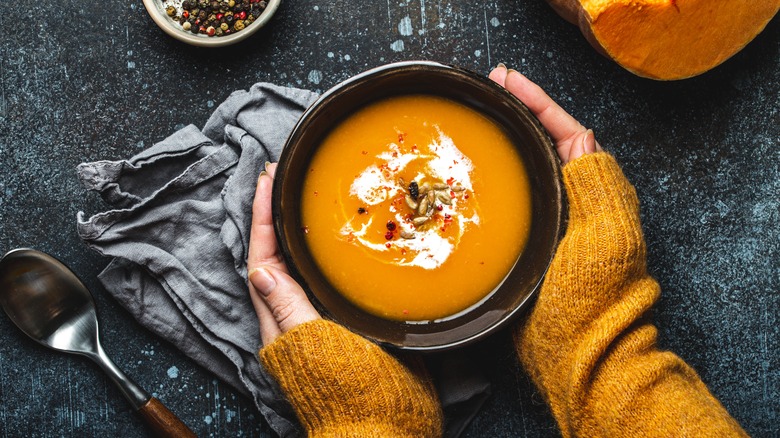Why You Should Avoid Soft Pumpkin Varieties For Soup
Pumpkins in autumn are a whole mood. But it turns out that our brains are wired to usher in fall with a steaming cup or bowl of something pumpkin, so whether you crave a hot coffee spiked with pumpkin spice or baked goods like cake pops or quick bread, the nostalgic flavors of the squash are an indelible part of the season.
According to All About Gardening, there are hundreds of different pumpkin varieties, encompassing both decorative and edible kinds. Gardener's Path identifies 11 of them that make for the best eats — from those with fun names like Cinderella and the Fairytale (because they look like the Fairy Godmother's pumpkin carriage) to the more familiar Dill's Atlantic (the varietal that wins the Great Pumpkin competitions at the county fair). For cooking, Gardener's Path recommends looking for sweet and dense kinds which have enough to flesh to create more than one recipe.
What pumpkin variety is good for soup
According to Healthline, pumpkins do a body good. Loaded with vitamin A, plus plenty of vitamin C and potassium as well as a cornucopia of other vitamins and minerals, eating more of the gourde is a delicious way to consume more antioxidants and boost your immunity (hello, cold and flu season). In addition, a hearty, homemade pumpkin soup is a cozy way to usher in the chillier season.
While you can use canned pumpkin, why not hit the farmers' market for some fresh, in-season fruit? With all of the varieties out there, figuring out the best pumpkin type to pick can be intimidating. According to Taste, you should go for a harder variety. Soft pumpkins will make your soup too watery.
Southern Living suggests using sugar pumpkins, which also go by the monikers pie pumpkin or sweet pumpkin, or an oblong variety called Long Island Cheese. The flesh on these varieties, compared to field pumpkins, is less stringy, which means less water. Still not sure if you've got the right one? Michigan State University recommends using smaller gourds, which offer denser flesh. According to the university, those are best for eating; larger sizes are better left for Jack-O-Lantern carving and other decorative uses.

